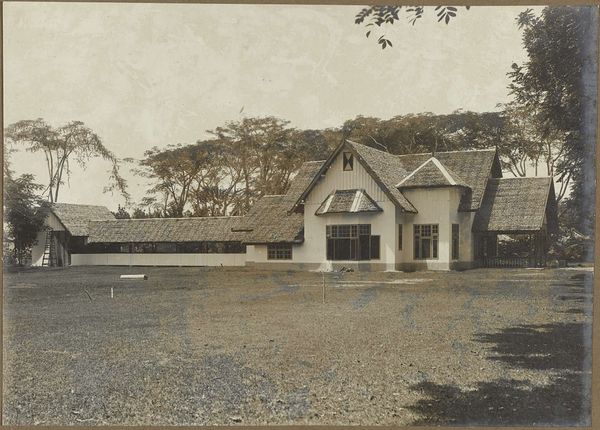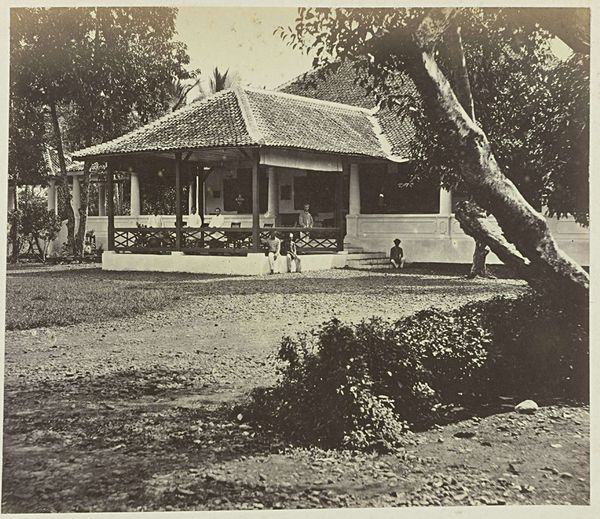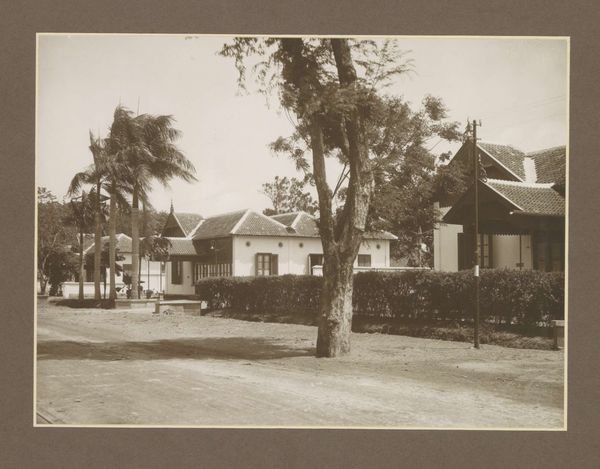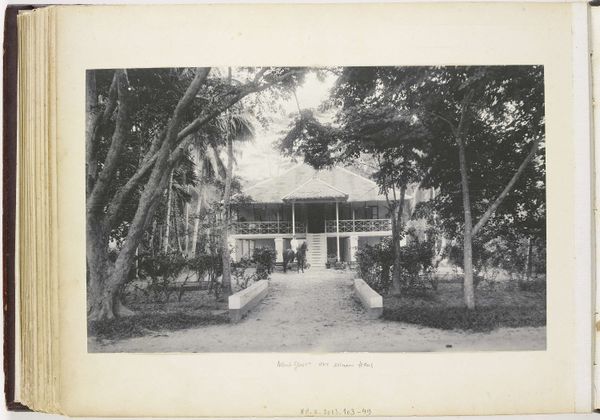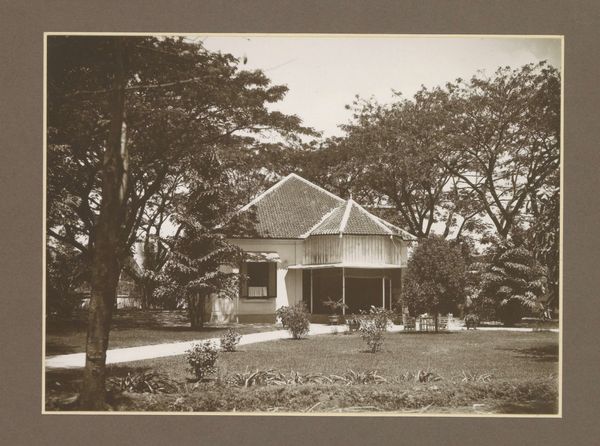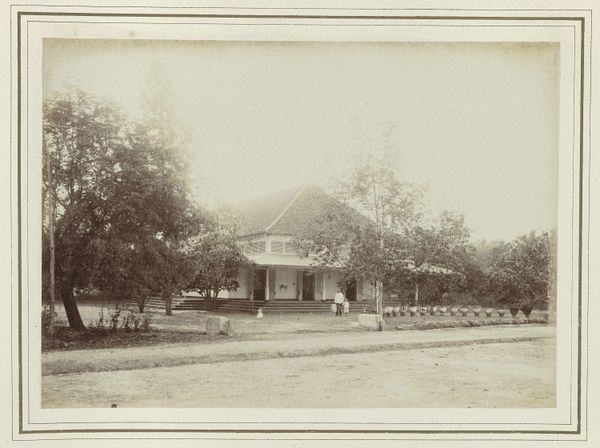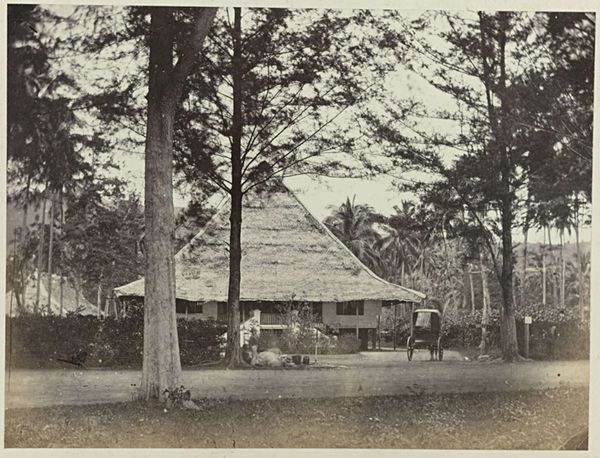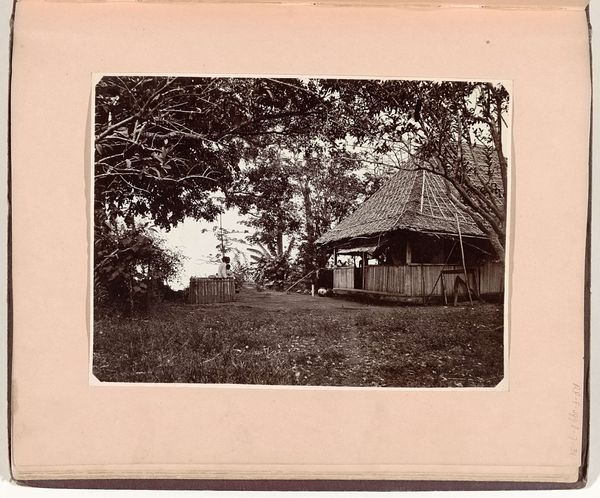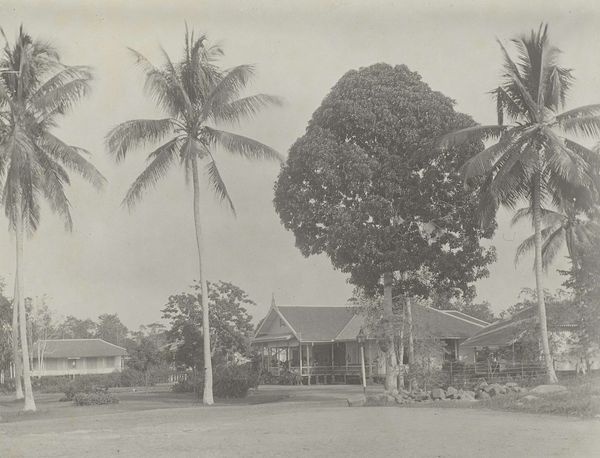
Exterieur van de polikliniek van suikerfabriek Goedo te Djombang op Java c. 1925 - 1930
0:00
0:00
Dimensions: height 297 mm, width 450 mm
Copyright: Rijks Museum: Open Domain
Curator: We’re looking at a photograph titled "Exterieur van de polikliniek van suikerfabriek Goedo te Djombang op Java," taken sometime between 1925 and 1930, by an artist named Isken. It depicts the exterior of a clinic at a sugar factory in Java. What’s your first impression? Editor: A pervasive tranquility, initially. But there's a strange sort of emptiness within its composition; the horizontal lines are quite rigid. The entire photograph is dominated by earth tones—it gives an austere, muted affect. Curator: Note how Isken structures the space. The geometric clarity of the clinic’s architecture, especially its tiled roof and the veranda, establishes a strong sense of order. See how the composition balances the structural elements of the building with the natural surroundings of trees and shrubbery? Editor: The geometry reads to me like colonial imposition. Those neat lines juxtapose violently against the natural landscape, embodying a power dynamic that controlled Java at the time. The sugar factory itself speaks of economic exploitation. The quiet scene hides histories of forced labor and resource extraction. Curator: While I acknowledge the colonial undertones, let’s consider how Isken’s post-impressionist style manifests in this photograph. The atmospheric perspective, combined with the soft focus, creates an image where reality seems slightly dreamlike. It almost evokes the sense of a faded memory. Editor: It is difficult to look at anything produced during colonial eras outside of the socio-political frame, however. The muted color palette can easily be interpreted as a washed-out idealism masking brutal reality. Who had access to this clinic, and at what cost to the native population? The photograph does not betray any hint of inequality, so it reinforces, rather than challenges, a status quo. Curator: A valid critique. But by analyzing Isken's deployment of spatial relationships and the tonal range within the photograph, we still see evidence of considerable artistic merit. I encourage all of us to contemplate both aspects. Editor: I concur. Viewing art from the margins provides a necessary intervention, if you will, while a formalist lens teaches us visual grammar that empowers new vantage points.
Comments
No comments
Be the first to comment and join the conversation on the ultimate creative platform.

